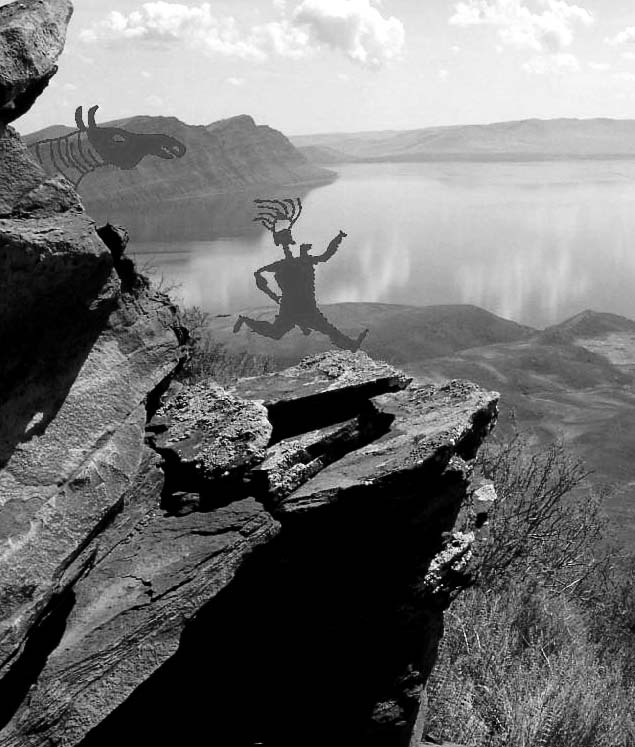| |
Erkki Luoma-aho
There are two different types of prehistoric rock art: carved or painted images. Rock paintings
are usually situated in caves or on vertical cliffs that are protected from above by a shelter. Rock
carvings, on the other hand, can usually be found on horizontal or only slightly inclined surfaces.
|
| |
These two categories of art do not have any clear mutual connection. It is not known why
only paintings and not a single carving has been found in Finland while the eastern areas, just beyond
the present-day border, are rich in carvings, but there are no paintings found there. Both carvings
as well as paintings can be found in areas to the west of Finland. |
| | The depth of incisions of rock carvings may reach 0.5 cm, but usually they are only 1_2
mm deep. Therefore they can only be seen with a favourable oblique light. The sites of rock image
were probably holy places for prehistoric societies. This theory is supported by the archaeological
findings, although the poor visibility of carvings contradicts this statement to a certain extent.
However, those that can be enhanced by the light of the setting sun usually form a unique sight
even today. |
| |
 |
| |
At some sites (for example in Scandinavia) rock carvings
have been overpainted with red ochre to make them clearly visible to
visitors. Some traces of ancient paint provides evidence that rock
carvings were also originally painted, but the pigments have faded
away on horizontal or inclined surfaces over the course of time. |
| |
With the material exhibited here I have attempted to show
how rock carvings may have looked just after their creation. The
colours I have used _ red, yellow and orange _ are the most
widespread colours used in prehistoric rock paintings. The painters of that
time used fat, blood and egg protein to fix the pigments. I have
composed my painting using a more modern technique: Photoshop
software and a colour printer. |
| |
I took the pictures myself for this exhibition called "Elks
and Men _ Rock Art from the Alps and Siberia" during my visits to
the Tom and Yenisei rivers in Siberia in 2000 (sites: Tomskaya Pisanitsa, Tutalskaya,
Novoromanovskaya, Sulekskaya, Boyarskaya, Oglakhty, Kazanovka) and to Val Camonica (sites: Bedolina, Luine,
Foppe di Nadro, Nquane, Paspardo, Sellero) in the Italian Alps in 2001. |
| | |
| | Opetushallitus utbildningsstyrelsen |
| | Hakaniemenkatu 5, PL 380 |
| | 00531 Helskinki |
| | Finland |
| | Phone: +90-7747-7712 |
| | Erkki.Luoma-aho@oph.fi |